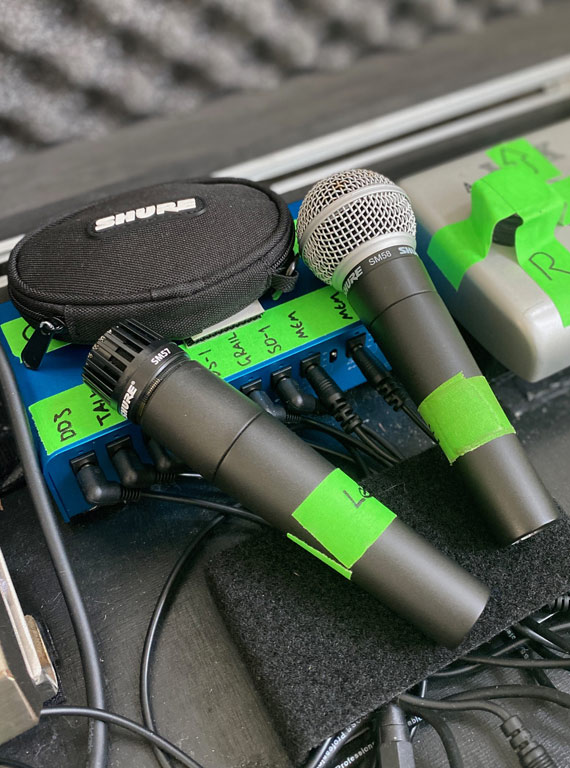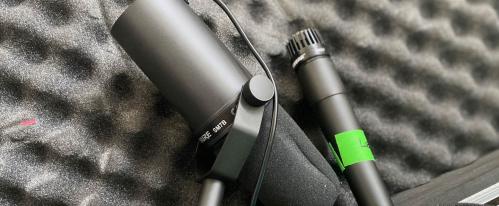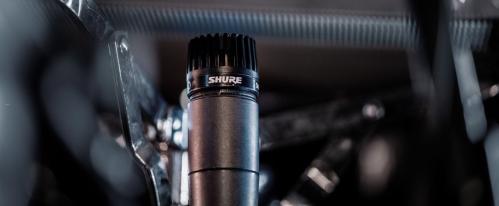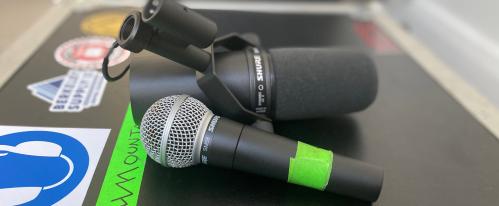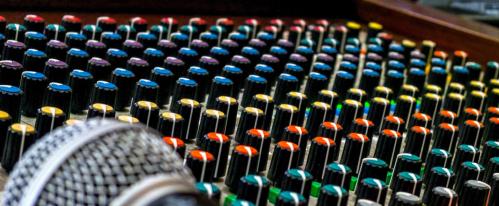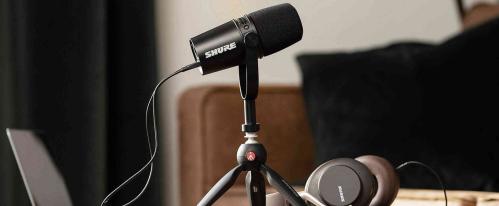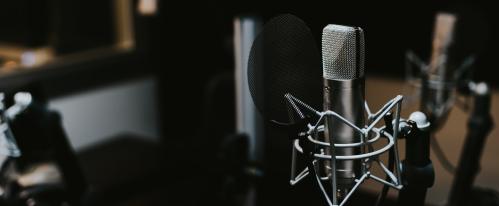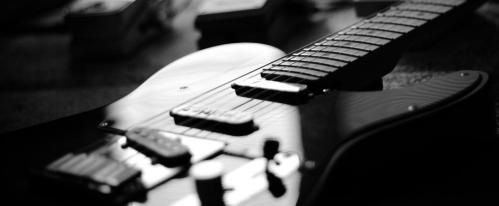We compare the Shure SM57 vs SM58 and show you which microphone is better for you in the live or studio environment. Here’s a hint… they’re both great
In the latest of our Shure mic comparison series, we’re comparing the Shure SM57 vs the Shure SM58. Both of these microphones are absolute industry-standard heavyweights in the world of live and studio sound. If you’ve ever been to a gig, heard a singer or heard a guitar on record, you’ve heard these microphones – they’re THAT important and totally ubiquitous.
We’ve covered the key benefits of the Shure SM58 and the reasons the Shure SM57 is so popular in previous articles – worth reading if you’re considering purchasing either one.
But you may be confused as to which option you need, and thinking “wait, do I need a Shure SM57 or a Shure SM58?”
You’ve seen and heard of both, but which one should you get?
So in this article, we’ll answer the question - what’s the difference between the Shure SM58 and the Shure SM57? And show you which mic you should use depending on what you need it for.
Disclaimer: I have both and use both of these microphones regularly. Whether I’m singing live or recording guitar – I always reach for either of these two microphones. But you may not need one depending on what you intend to use it for – or you may need both! I’ll cover the subtle differences and features you may not have read about between the SM58 and SM57 which you’ll need to know before buying.
Here’s a list of what we’ll discuss in this comparison:
- Quick overview and comparison of benefits
- Similarities between SM58 and SM57
- Differences between SM58 and SM57
- Frequency response differences between SM58 and SM57
- Polar patterns compared
- Is The Shure SM58 better than the SM57? Should I use the SM58 or the SM57
- Final thoughts and conclusion
If you’re comparing Shure microphones you’ll enjoy reading the likes of the Shure SM7B vs SM58, as they explain all the differences between these Shure vocal mics – ideal when you’re building a home studio or just trying to find the right mic to suit your needs.
What is the Shure SM58 used for compared to the SM57?
In summary, the SM58 is better suited and designed for vocal applications. It’s the industry-standard live vocal microphone. The Shure SM57 is used for high transient sounds like snares, guitar cabs and brass. It’s the industry standard guitar cabinet microphone that can also be used on vocals.
Although both can be used to record anything you like, the SM58 is better suited to live applications rather than recording. This is due to its polar pattern and dynamic capsule with frequency response specifically tailored for live vocals.
The SM58 CAN record vocals and even record high SPL instruments. It’s just not always the best option for studio vocals unless you want a less polished sound.
When you have the Shure SM57 in your arsenal, it's always best to reach for this if you want to record guitars or instruments.
The Shure SM57 has become the go-to microphone for recording snare drums, guitar cabs and high volume/high transient sound sources. It does it so well that you’ll likely never find a studio without one of these microphones around.
The SM57 is perfectly capable of recording vocals, and has been used by live vocalists for decades – but due to its polar pattern, heavy bass frequency response and high SPL capabilities it’s just the better option for guitar cabinets and instrument recording.
Fortunately, both of them are VERY budget friendly and won’t break the bank.
Shure SM58 Quick Overview
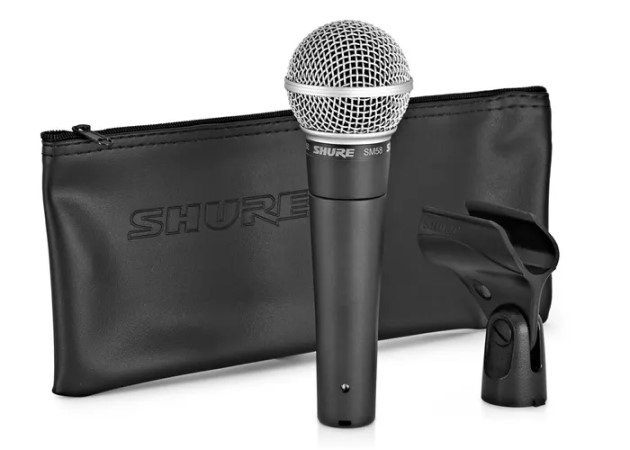
The Shure SM58 is widely regarded as the best live handheld vocal mic of all time. You’ll find this at every venue in the world and almost every practice room you ever set foot in.
Live artists love them because they’re nigh-on indestructible and public speakers and venue owners rely on them to last decades of (ab)use, sweat, drops and kicks. You’ll break your hand before you break this (but please don’t try that!).
Benefits
- It’s the industry-standard live vocal microphone
- Provides a presence boost from 2 kHz to 7 kHz to help you stand out
- It’s almost indestructible - it’ll last a lifetime
- Provides accurate sound at high levels – it won’t distort
- Less susceptible to feedback at high gain
- Fairly “cheap” compared to other microphones, but it certainly doesn’t suck
- Can be dropped, damaged, thrown, soaked in water and still work
- You don’t need good mic technique to use one – just sing!
- Bass roll off so you can get closer without proximity effect
Drawbacks
- Doesn’t sound as polished or clean in a recording scenario
- Has a somewhat lo-fi sound when recording
- A thin pop filter means it picks up sibilance and plosive at close range
- There’s not much else to write – it’s almost perfect
Shure SM57 Quick Overview
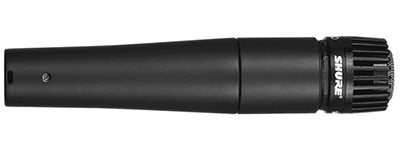
The Shure SM57 is the ultimate guitar and instrument microphone. Whether you’re recording drum overheads, close mic’ing a cranked tube amp or recording the subtle nuances of your brass snare – it can handle it all.
Again, this is an almost indestructible dynamic microphone that live sound engineers, producers and home recording enthusiasts rely on for accurate, high-quality sound on record.
It’s also very budget-friendly.
Benefits
- It’s the industry standard guitar cab, snare drum overhead and high transient microphone
- Gives you a presence boost from 2kHz to 6kHz
- It’s like the Terminator – lava is the only way to kill it
- Provides accurate, detailed sound at high levels
- Less susceptible to feedback at high gain
- Tight polar pattern the closer you get
- Provides a roomy feel if you move the mic slightly back from the sound source
- Very “cheap” in price compared to other microphones
- Can be knocked, dropped and exposed to water/beer/sweat without damage
Drawbacks
- Plosives and sibilance are very clear when singing
- Exposes poor recording environments unless close mic’ing
- Not particularly hi-fi sound at low levels
- Prominent proximity effect on vocals at close range
- You can’t eat it? Honestly, there are no real downsides.
The similarities between the Shure SM58 and SM57
When comparing the Shure SM58 vs the SM57 we need to talk about the similarities first.
Here they are in bullet point form:
- Both the SM58 and the SM57 are dynamic microphones.
- Both have a bass roll-off - the SM57 rolls off after 40Hz the SM58 rolls off after 50Hz
- Both microphones are based on the Unidyne III cartridge
- Both microphones have a cardioid polar pattern to reject off-axis noise.
- Both can be used for vocals and instrument recording
- Both have a 3-pin XLR connection.
- Both can be used live.
- Both have elongated chassis to increase bass response
- They don’t need phantom power.
The differences between the Shure SM58 and SM57
There are some pretty major differences between the SM58 and the SM57 when it comes to using them for live or studio recording – especially for vocal applications.
Both are incredibly versatile microphones that can capture the energy of your performance, but one is far more forgiving in a vocal application (the SM58) and the other has a tighter polar pattern at close range but causes proximity effect problems if you get to close with your mouth (the SM57). We’ll explain in detail a little further down.
The major difference between the SM58 and SM57 is highlighted in how they are designed to be used. The polar pattern of the SM57 is better suited to close mic techniques of an instrument where the proximity effect does not affect your recording. However, the SM58 is better suited to vocals as you can almost put the mic IN your mouth and it will still sound clear.
The SM58 is perfectly suited to live vocal applications. And is easily used by everyone from complete beginners to seasoned professional singers. The round pop shield allows you to rest your mouth on it without the proximity effect (unwanted bass boom) from creeping in. It’s designed to be handheld and has an internal shock mount that reduces handling noise – which is why singers can hold the mic!
The Shure SM57 is designed to be used with a mic stand – not to be held. It records exactly what you want, exactly how it sounds without any colouration.
It can handle extremely loud sound signals without distortion – whether it’s a loud vocal or a wailing guitar cab or saxophone. It’s perfect for live close mic’ing of instruments and equally as important for recording high-quality instrument audio in the studio. However, it’s better suited to a mic stand as the lower frequency boom can become audible if you move it around too much.
Here are the differences in bullet form:
- The Shure SM57 has a frequency response of 40Hz – 15,000 kHz, while the Shure SM58 has a frequency response of 50Hz – 15,000 kHz. This means the SM58 offers a better bass roll-off so you can get closer to it with your mouth (part of the reason singers rest their mouth on the mic when singing). The SM57 offers a slight increase in detail at lower levels which is ideal for musical instruments where you need to preserve the bottom-end weight, but not ideal for vocals at close range.
- The Shure SM58 has a removable windshield and integrated pop filter. The Shure SM57 has a very small pop filter and a very thin windshield underneath it. You can buy a windshield if you wish to use it for vocals (recommended).
- The SM58 is slightly thicker and larger than the Shure SM57 and easier to hold
- The Shure SM57 does have a shock mount, but the SM58 has a slightly better one inside to combat handheld movements.
- The SM58 can be heard better at a distance without adding too much room sound.
- The SM57 provides a gritter, lo-fi sound than the SM58 – especially on vocals.
- The SM57 gets boomier the closer you get due to the shorter distance of the capsule from the pop filter. The SM58 has a bass roll-off and is more forgiving when it comes to proximity effect.
- The Shure SM57 is designed for live instrument applications more so than live vocals.
- The Sure SM58 is designed for live vocals, both speech and singing applications.
- You’ll get more plosive noises with the SM57 compared to the SM58 due to the smaller pop filter. These are not necessarily overbearing in a live scenario but VERY apparent in a recording situation unless you use a pop filter.
Frequency Response Differences between the Shure SM57 and Shure SM58
As mentioned above, the Shure SM57 has a frequency response of 40Hz – 15,000 kHz, while the Shure SM58 has a frequency response of 50Hz – 15,000 kHz.
Why is this important to know?
This difference in frequency response between the SM57 and SM58 shows you why one is better than the other for vocals, and one is better for instrument recording.
Shure SM58 Frequency Response
You’ll see in the image below that the SM58 offers a welcome presence boost at around the 2 kHz to 7 kHz frequency – after that, it starts to taper off. The benefit here is that you hear the higher frequencies as soon as you start singing or speaking. This means your vocal stands out in the mix which is exactly what you need if you’re singing in a band, talking over musicians playing in the background (perhaps in a worship scenario) or you’re speaking in public and you need to be heard. This presence boost adds, well, presence to your performance and is exactly why it’s relied upon by singers who front bands!
The bass roll-off is extremely important and a key benefit when compared to the SM57 when singing. If you’re like me and you place your top lip on the microphone when singing, the SM58 doesn’t suffer from the unwanted proximity effect that is apparent in other mics with a lower frequency. You can get as close as you want and still be heard clearly. The SM58 will start to get bassier but it won’t sound muddy. The engineer can work their magic on the mix and bring the mids back out for you.
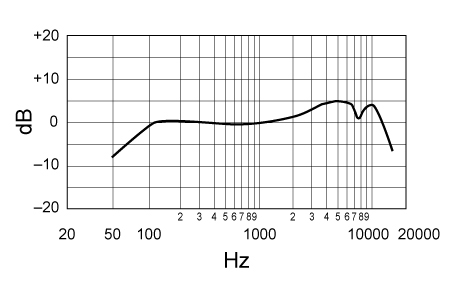
Shure SM57 Frequency Response
The Shure SM57 enjoys a tailored frequency response of 40 Hz - 15 kHz. This has been developed to capture the most useable frequencies as anything below 40Hz and anything above 15kHz is hard to actually mix in a live scenario and the human ear can’t really hear it if there are other sounds happening around it, anyway.
Why is this important?
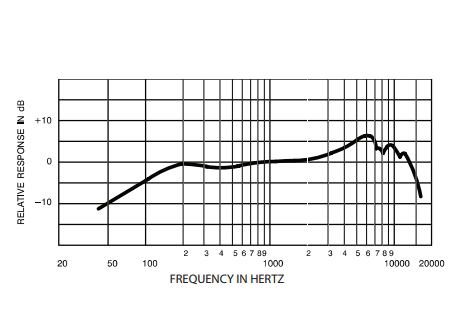
The SM57 is not as sensitive as the SM58, as the presence boost doesn’t kick in until around the 3kHz mark and drops out after 6kHz. This however is useful for cranked guitar and bass amps as well snare drums as it cuts out some of the top-end sparkle that can make your recording sound “washy” and bright. You still get high-end detail, except it’s more about the mids – the part where you get all your detail from!
The low 40Hz frequency offers a very noticeable bass boost which is ideal for recording guitar cabs, snare drums and drum overheads as it gives your sound more “weight” and bass presence. Your recordings sound thicker.
However, if you’re using the SM57 for vocals and you get too close, the proximity effect will kick in and you’ll not only lose the detail of your voice but find that your sound becomes muddy and unclear. It’s great for vocals if you want a lo-fi, natural and gritty sound, you just can’t get as close to it as an SM58 or Beta 58A and you'll need some microphone control.
One benefit of the SM57 over the SM58 is that the SM57 sounds a touch brighter because of the presence boost. Studio owners and recording enthusiasts love the SM57 for guitars and bass as it can push the mids of your guitar or bass amp to the forefront. In case you didn’t know, the mids section is where all the detail lies in your guitar or bass sound.
This is part of the reason the SM57 is the industry-standard musical instrument microphone. It gives you everything you need and removes all the unwanted frequencies making recording and live mixing a lot easier.
Polar Patterns of The Shure SM57 vs SM58
Both the SM57 and the Shure SM58 have cardioid polar patterns. However, the SM57 is tighter at close range and loses some detail when you move further back.
The SM57’s capsule is almost completely up against the grille, whereas the SM58 has a little more space.
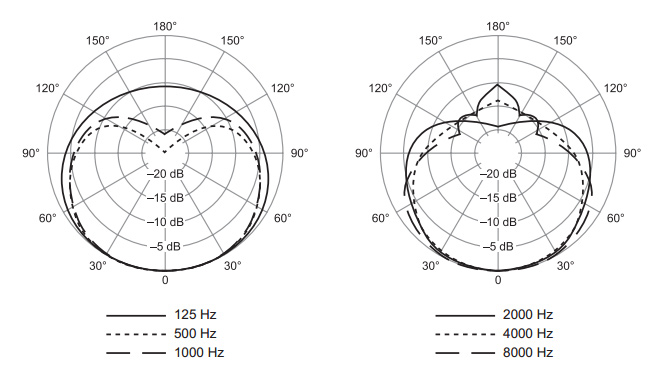
The close mic capabilities of the SM57 is a major reason studio engineers and live sound engineers prefer the Shure SM57 for recording instruments as it completely rejects the off-axis sound, solely concentrating on the source the closer you get whether that’s a guitar cab, bass cab or snare drum.
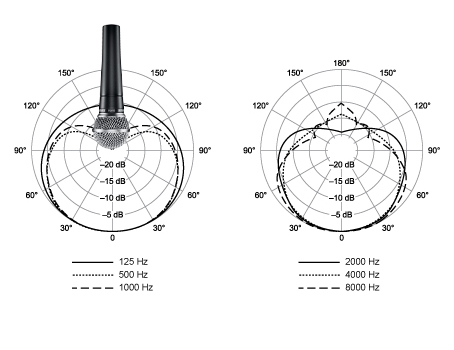
Both mics have a similar polar pattern when you move back from the mic. This means both mics may be affected by a poorly acoustically treated room if your sound source is further away from the microphone. If you move back you’ll pick up a little room noise which may or may not be a good thing depending on what sound you want.
Again, this is why the SM57 wins when it comes to close mic’ing, but loses when it comes to live vocals as you don’t want to have your mouth right up against the mic at all times to compensate for the room noise or suffer the proximity effect boom when you have your lip on the mic.
However, if you DO want a lo-fi sound – think “Breed” by Nirvana or “Mr Brightside" vocals by The Killers - you’ll love what the SM57 has to offer when recording vocals. Just use a good-quality windshield in the studio!
Shure SM57 vs SM58 for recording and live
So which mic is better for recording and which mic is better for live use when it comes to the SM57 vs SM58?
Is the Shure SM58 or SM57 better for Live Use?
Based on the different frequency responses we’ve discussed and the SLIGHTLY different polar patterns, both the Shure SM57 and SM58 are perfectly fine to use for live use. However, each mic is better suited to different live sound sources.
What about the SM57?
Because of the built-in presence boost and slightly better low-end detail, the SM57 is better at mic’ing up instruments compared to the SM58 as it retains the weight, the thickness of sound and bass frequencies you need when you’re live mixing a snare or guitar cab, for example. It removes the higher-end detail which is not only harder for sound engineers to mix onstage but is almost impossible to hear anyway. The presence boost brings out the mid-range details and the lo-fi sound provides a “livelier” feel that captures the live qualities of your instrument. When mic’ing instruments up close, it can’t be beaten.
Overall the SM57 is better for live use when mixing instruments.
This doesn't mean it CAN’T be used for live vocals. Elton John used it for his live show at the famous Dodgers Stadium LA 1975 performance. Every US president uses it for their live speeches, too. If it’s the only mic you have and you’re worried about hygiene when singing live, it’s perfectly ok for use in a live scenario for vocals – but you’ll prefer the sound and feel of the SM58 as it just feels better to sing with and doesn’t suffer from proximity effect that can cause issues with live vocal mixing at close range.
The SM57 is constantly regarded as the best guitar and snare cab mic of all time. It’s very rare to see anyone using an SM58 on a drum kit or guitar cab or drum kit. But stranger things have happened…
What about the SM58?
For live vocals full band, public speaking or live sessions where you want to retain the unpolished feel but still enjoy high-quality, detailed vocals, the SM58 wins hands down.
The forgiving polar pattern with attenuated bass frequencies lets you get up close and sing your heart out without issue. The SM58 has a nice presence boost which brings your vocals out in the mix so you get a clear, natural sound. Your vocals are almost free of sibilance and plosives thanks to the built-in windshield and pop filter and the high-end detail with a distinct lack of proximity effect ensures you need absolutely ZERO mic control to enjoy using it.
In short:
Shure SM57 = livelier, lo-fi sound with presence boost and lower bass adds detail and weight
Shure SM58 = very detailed vocal mic with bass roll-off to combat proximity effect
Is the Shure SM58 or SM57 better for Recording?
Both the Shure SM58 and the SM57 can be used for recording. However, recording vocals with an SM58 is not ideal as the somewhat limited frequency response makes your vocals sound a little “dull” in the studio.
But recording live sessions – that’s another story altogether!
What about the SM58?
When you have a wider frequency response, like that of a condenser microphone that offers 20-20kHz you get EVERY detail imaginable. This means every subtle nuance and characteristic of your voice is captured in minute detail. This is why producers choose condenser mics for recording vocals.
As the SM58 has a somewhat limited frequency response of 50Hz – 15,000 kHz, you get all the sound quality you need without added detail. This can sometimes make your recording sound dull, but conversely reduces the unwanted frequencies that can be hard to mix.
In a live session though, this is ideal as you filter out the unwanted frequencies from the other instruments and capture the raw performance of your vocals. As we all know, that singing live and singing in a recording environment are very different.
The polar pattern is still tight at a distance but the lack of low-end detail is not ideal for recording instruments as you lose the weight and thickness of your instrument. It can be done, it’s just not the best option to record instruments with if you can reach for an SM57.
What about the SM57?
As we’ve talked about, the SM57 suffers from a proximity effect when you record vocals. But if you can manipulate the mic so you’re not too close, you’re left with a beautiful sounding gritty, lo-fi sound that provides a “lively” feel. Brandon Flowers recorded ‘Hot Fuss’ with an SM57 – so that’s the kind of sound you’ll get.
The SM57 is perfect for recording instruments as the tight polar pattern provides almost complete off-axis rejection and studio-quality sound at all times. The SM57 has an SPL of 190dB – which is actually louder than a NASA space shuttle taking off. Your cranked amp, hardest scream or heaviest snare aren’t going to be a problem.
The extended low-end frequency response is ideal for recording as you retain the depth and weight of your instrument, adding a fully-rounded sound to your recordings.
In short:
Shure SM57 = livelier, lo-fi sound with added bass detail for instruments
Shure SM58 = lively sound with lack of proximity effect, lacks detail for instruments
Is The Shure SM58 better than the SM57? Should I use the SM58 or the SM57?
Both mics are industry standards for different reasons. Neither mic is “better” overall, but both mics are better suited to different applications.
In short, you should choose the SM58 for live vocals and the SM57 for live mic’ing or recording of instruments.
Choose the Shure SM57 if you want to record guitar cabs and snares or record drum overheads. You can also use the SM57 for vocals – just get a windshield. It’s a great all-rounder if you need it to be.
You should choose the SM58 if you’re singing or speaking live. The Shure SM58 gives you clearer vocals overall without the fear of the proximity effect creeping in. It’s widely regarded as the industry standard live vocal mic, perhaps only challenged by the Beta 58A so you’re never going to regret buying one for live vocals. If needed, you can record your vocals in a live session, or use it to record guitars or room sounds if you’re capturing audio for demos.
If you can get both mics – one for guitars and/or drums and the other for vocals, you’ll never need another mic for recording instruments or singing live ever again. These two microphones are the absolute gold-standard options, along with the SM7B.
Final Thoughts and Conclusions
I will always suggest trying out as many microphones as possible so you can get the best sound depending on what you need. But if you’re on a budget and building your own studio, or fronting a band you’ll never go wrong with the SM58 and SM57 combo. For live studio engineers, bands and studio enthusiasts, the SM57 is essential for recording or mixing guitar cabs and snares.
The SM58 is the best option for live vocals.
Both mics are essential. But if you had to choose, always remember:
Shure SM57 = Live and recorded instruments + recorded vocals in a controlled setting with a windshield
Shure SM58 = Live vocals + recording of demos in the studio
You won’t ever regret buying the SM58 or the SM57 as they’ll last forever and won’t ever let you down. Just choose the right option and you’ll instantly improve your sound in a live scenario or in the studio.
Need help picking out a new microphone? Call us on 0151 448 2089 or check out your local store to speak to one of our Experts about your needs.

